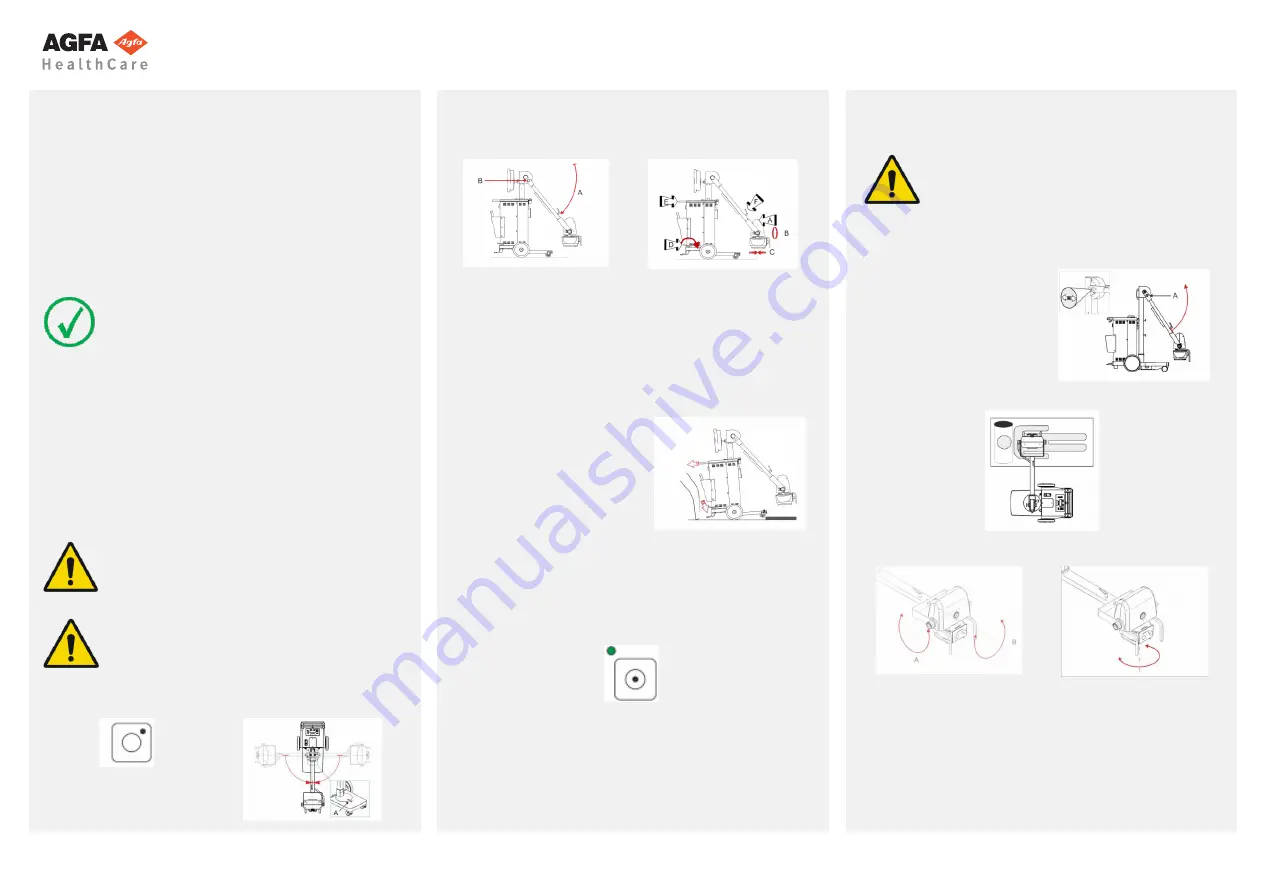
Getting started with DR 100e - Performing an exposure
0366A EN 20170421
1
Starting the NX workstation and the DR
Detector
Switch on the all-in-one PC by pressing and holding the power
button for 2 seconds.
Power on the DR Detector.
2
Retrieving patient info
Note: If you use a wired network the network cable
must be plugged in to be able to query the RIS or to
send images.
On the RIS, schedule the examinations.
In NX, query the RIS.
Define the patient info for the examination.
Start the exam.
3
Moving the unit
CAUTION:
Do not use the unit on floors with an Inclination
higher than 5 degrees. Do not drive the unit on ramps
with an inclination higher than 10 degrees.
CAUTION:
The equipment must be moved only after bring it to
transport position
Make sure the device is
switched off.
Power off button
Move the rotating column in
central position.
Lower the arm (A) to locked
position.
Put the X-ray tube (A) in
vertical position on both rotation
axes (B and C).
Turn the X-ray tube rotation handle (F) clockwise. The device is
now in transport position.
Release the brake.
On a system with rotating column, release the brake by pulling the
lever on the handlebar.
On a system with fixed column, release the brake pedal.
Move the unit holding the handlebar.
To overcome obstacles or small
drops, press with the foot on the
pedal for the tilting and, at the
same time, pull the handlebar.
4
Starting the device
Unroll the mains cable from the cable reel and extend it
completely.
Plug the cable into a mains power socket.
Press the power button.
5
Positioning
WARNING:
Monitor the patient position (hands, feet, fingers, etc.)
with special care to avoid injury to the patient caused
by unit movements. Patient hands must be kept away
from mobile components of the unit. Intravenous
tubing, catheters and other patient connected lines
should be routed away from moving equipment.
Pull and rotate the knob (A)
with the arrow towards the green
dot to unlock the arm.
Lift the arm.
Position the X-ray tube
relative to the region of interest
by moving the device or rotating the column.
Point the X-ray tube towards the region of interest.
The X-ray tube can be tilted in
all directions.
The collimator can be rotated on
its vertical axis.


